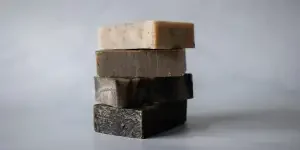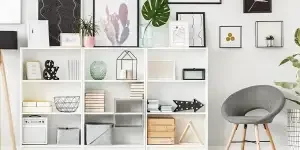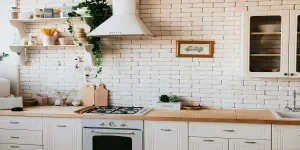Table of Contents
Introduction
How many compartments?
How to prevent silverware organizers from slipping
What material is best for a silverware organizer?
Plastic silverware organizers
Wooden silverware organizers
Metal silverware organizers
Bamboo silverware organizers
Final thoughts
Introduction
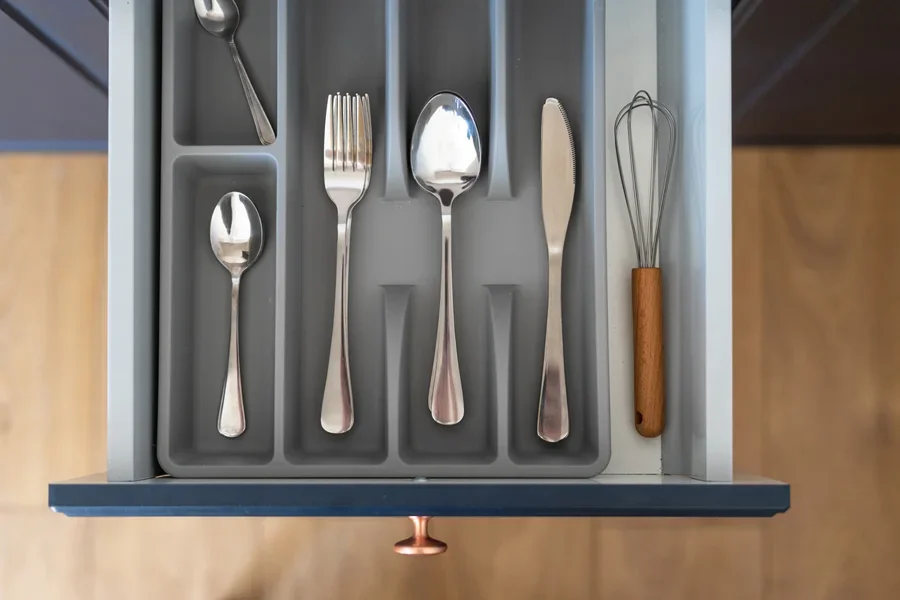
A silverware organizer is an essential part of any household kitchen, as it allows for easy organization of utensils. Choosing the right material can have a significant impact on the functionality and aesthetic of the kitchen, with options ranging from durable plastics to traditional woods. Continue reading to discover the advantages of each type of silverware organizer.
How many compartments are necessary?

The most common size of silverware organizer includes 4 or 5 compartments. This is enough to store the majority of standard silverware sets, which usually comprise 4 of each type of utensil. There’s an extra compartment that can be used for other small kitchen gadgets or larger serving utensils, such as large spoons.
Organizers with six or more compartments are ideal for larger households that typically have the largest utensil sets to accommodate everyone. They’re also helpful for people who frequently cook, as they provide more space to organize their silverware and offer a more precise separation of it.
How to prevent silverware organizers from slipping
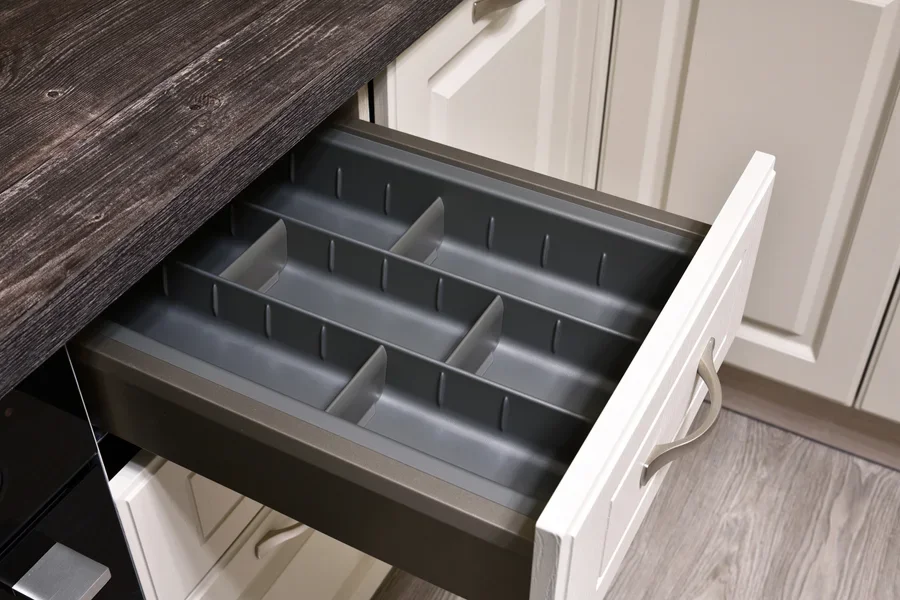
There are several ways to prevent a silverware organizer from sliding in the drawer. The most popular method is to use non-slip drawer liners, which are made from either silicone or rubber. The grippy surface stops the storage box from moving when the drawer is opened or closed.
Another method is to purchase an organizer that comes with non-slip feet integrated into its design. If the organizer doesn’t include silicone or rubber feet, it’s very easy to add adhesive rubber pads to them later.
Many consumers also opt for custom-fit organizers so they don’t have to worry about them sliding when the drawer is in use. This means that the organizer will fit the exact dimensions of the drawer, ensuring no movement occurs.
What material is best for a silverware organizer?
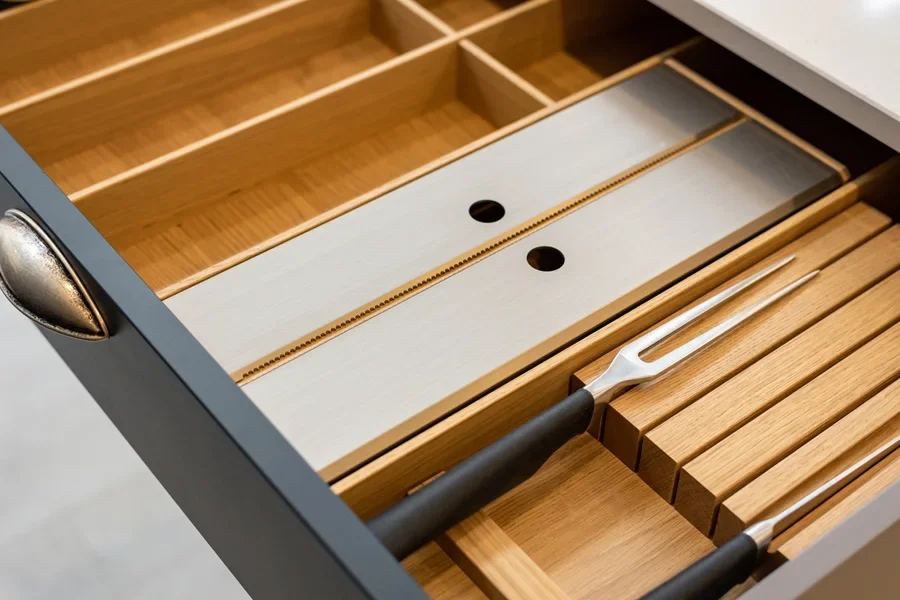
Choosing the best material for a silverware organizer isn’t an easy task. There are several essential features to consider, and it must also fit the overall design of the kitchen.
According to Google Ads, the search term “silverware organizer” received an average monthly search volume of 9,900 in 2024. Searches rose to 12,100 per month in February and March, and again between August and October. The lowest search numbers were recorded in March and May, when they only reached 8,100.
Continue reading to discover the key benefits of each type of material for silverware organizers.
Plastic silverware organizers

The plastic silverware drawer is among the most popular for kitchens due to its affordability and durability. It’s made from high-density plastic that’s easy to clean and resistant to staining. Most versions are lightly colored or white, allowing them to blend in better with the kitchen’s design.
Plastic cutlery drawers are available in standard dimensions, such as 12” x 16”, or they can be customized to fit drawers more securely. Expandable versions are also an option for kitchens that have more expansive drawer spaces.
The downside to using plastic silverware organizers is that lower-quality versions may deteriorate over time, and their visual appeal may fade with exposure to high temperatures and sunlight. However, they’re still efficient and cost-effective, making them a good option for most kitchens.
Wooden silverware organizers

Wooden silverware organizers are a fantastic option for consumers looking for a timeless and classic look in their kitchen. These organizers are made from hardwoods such as maple, and they provide a natural look that complements rustic or traditional-style kitchens. The smooth finish, as well as the sharply defined compartments, can range from four to eight sections, or they can be customized to suit your needs.
Most wooden cutlery organizers comfortably fit a standard drawer size, such as 10” x 14”, but expandable versions are also becoming popular, as modern kitchens often have wider drawers than traditional ones. All of these organizers are built to last, making them popular among individuals who want long-term use and a convenient layout in their kitchen.
Wooden organizers require more care than those made from other materials, and they shouldn’t be exposed to excessive moisture, as this can cause cracking over time. For cleaning, a damp cloth should be used, and the organizer should be dried immediately. Using a dishwasher is also highly discouraged, as the heat and moisture can cause warping.
For budget-conscious consumers, wooden silverware organizers may not be the best option, but they look incredible in rustic or traditional kitchen settings.
Metal silverware organizers
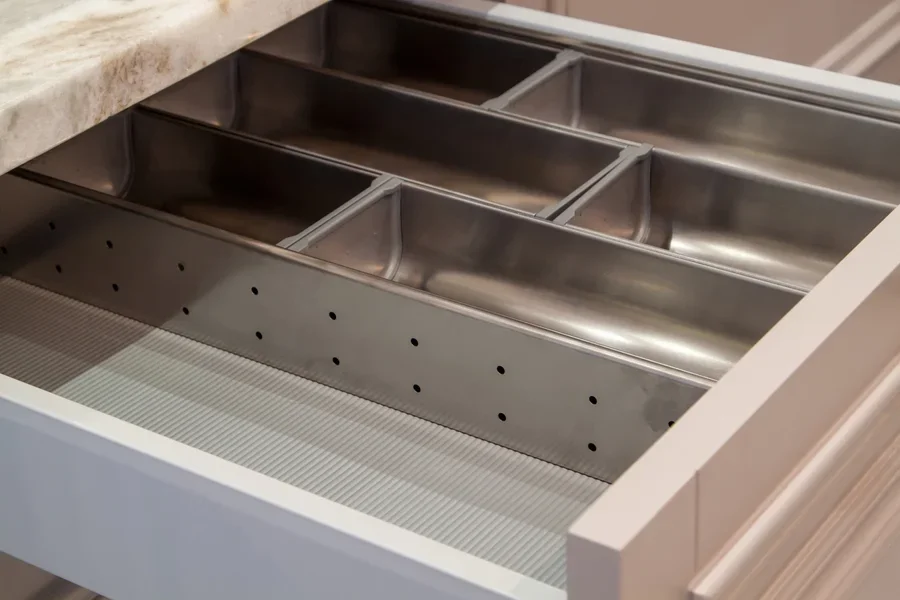
The most durable of all cutlery organizers are metal silverware organizers. They’re great for providing a minimalist and modern look, and they’re made from either stainless steel or a chrome-plated wire mesh. Being resistant to rust and corrosion is what makes them a popular choice among buyers as well.
Metal cutlery organizers typically feature between four and six compartments, with sizes ranging from approximately 12” x 16” to accommodate larger drawer spaces. Versions with a mesh bottom finish are typically lighter in weight and offer more breathability than their solid metal counterparts, allowing utensils to stay dry and ventilated well.
There are, however, some downsides to these organizers. Those with an open-mesh design can allow debris to fall into the drawer, requiring more frequent cleaning. Their rigid edges can also be a hazard if they’re not padded, and they create a loud noise when utensils are placed in them. They’re still popular for their durability, though, and they’re among the easiest silverware organizers to clean as well.
Bamboo silverware organizers

Using bamboo silverware organizers is the most popular choice among eco-conscious consumers who want a natural aesthetic in their kitchen. These organizers are known for being lightweight and durable, as bamboo acts in a similar way to hardwood but without being too bulky.
The warm-toned and smooth finish of bamboo cutlery organizers adds a touch of elegance to a kitchen space, and the defined compartments inside are ideal for storing all types of cutlery, as well as larger utensils, while still maintaining a refined look. The majority of these organizers are sold with five to seven compartments, and they are commonly both stackable and expandable. This means they can be adjusted between 13” and 19” in width to accommodate different drawer sizes.
Bamboo is another material that’s sensitive to moisture and humidity, so it should not be submerged in water or placed in a dishwasher for cleaning. This material is almost as expensive as plastic but more affordable than traditional hardwood organizers, making it a decent choice for those seeking sustainable and affordable kitchen storage solutions.
Final thoughts
Choosing the best material for a silverware organizer comes down to personal preference as well as kitchen aesthetics. Wood and bamboo are good options for eco-friendly buyers, whereas plastic is ideal for people on a budget who want something low-maintenance. Metal is another option, although less popular due to the noise it creates and the potential design flaws.
